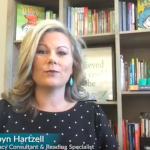Flexible, Personalized Coaching Models to Support Educators in Changing Times

The 2019-2020 school year has been rife with unprecedented challenges and opportunities for educators, parents, and students. Schools had to learn new ways of delivering instruction, connecting with students, and collaborating with colleagues. Now that the summer is here, and we have a brief pause to catch our breath, we can reflect on what we learned and how we will use those lessons moving forward. For coaching, the shift to remote learning may have caused a real sense of “what do we do now?” I know it did for me.
One thing that was made abundantly clear in the transition to remote learning is how critical it is that WHAT we teach in the classroom -and HOW we teach it-can be transferred to other formats. I learned this same lesson with coaching. The WHAT and HOW of our coaching must build teacher and administrator capacity to do their best work in whatever environment is presented.
Coaches can and must be models of flexible thinking and instructional adaptation. We must use the tools we have and learn new ones so that we can reach teachers and administrators by whatever means necessary. To do this, it requires us to look at the tools available through new, innovative lenses to see what they “could” do rather than for what we have always done with them. For me, this has meant becoming familiar with the Workflow feature in TORSH and using it as a content management and delivery system for professional development and coaching. I can create workflows related to specific instructional goals for asynchronous coaching. Teachers are assigned to a workflow (I call them Learning LABS).
Each of the LABS consists of a predetermined number of coaching cycles. Each cycle is set up as a page in the workflow and consists of objectives, learning content, and an activity in which teachers upload videos of themselves applying the learning for feedback. They have a self-reflection that they use as they watch their own videos, and I give them written feedback and/or schedule a personal debrief call to debrief. This has allowed for both differentiation in my coaching and building personal connections that a 30-minute classroom visit on campus would not have provided.
Providing support in flexible ways not only allows the important work of coaching to continue, but it also models the possibilities that can exist when we look at the tools we have through new eyes. With the challenges presented to educators by Covid, the opportunities for coaches to be creative are not only endless but necessary.

Robyn Hartzell has served in education since 1998 and has experience in a variety of roles: teacher, instructional coach, interventionist, trainer, consultant, and program coordinator at the campus and regional levels. Currently, she works as an independent consultant and coach promoting effective instructional and leadership practices and championing the need for quality professional learning. Robyn takes privilege in coaching professionals in their craft and is passionate about helping organizations develop leaders who make a lasting, positive impact on the programs and people they serve.
Be sure to follow Robyn on Twitter @robynhartzellpd and check out her website at www.hartzellpd.com



